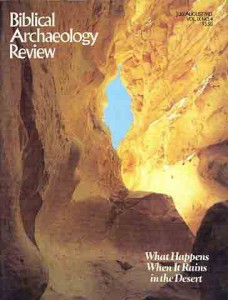News from the Field: Gold Hoard Found at Capernaum

I had not come in search of gold. I was an academician, seeking only to understand. Until 1980, I had been an armchair archaeologist. Then I accepted an invitation to become associate director of the volunteer program of a dig at Capernaum. That summer, I worked in a residential quarter of the city about 200 feet east of Capernaum’s famous ancient synagogue and northeast of the equally famous octagon church built over what may have been St. Peter’s house.a
The house I was excavating had been built in the late Byzantine period. Our first discovery was a maze of thin walls held together by mud, built in the ninth century. Digging deeper, we reached the solid walls of the square sixth-century Byzantine house. It was large and commodious, over 40 feet on a side. In later periods (in the eighth century), it had been subdivided into smaller living units, but its occupants in early Arab times still enjoyed the comforts of the original Byzantine structure. It was built of the large black basalt stones plentiful in the Galilee, bonded with good mortar, so that it had survived several occupational periods indicated by changes in the traffic flow within the house and the different floor levels.
Already a library member? Log in here.
Institution user? Log in with your IP address.

